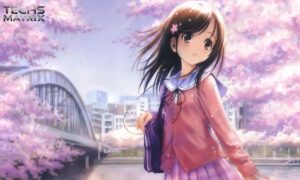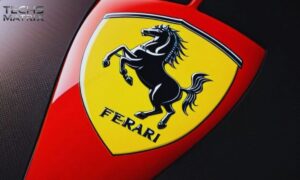Counter-Strike 1.6, released in 2003, wasn’t just a game; it was a cultural phenomenon that left an indelible mark on the gaming world. At the heart of its visual identity were its iconic game icons and banners, elements that went beyond mere decoration to become symbols of a gaming revolution.
These visual elements played a crucial role in shaping the game’s identity and enhancing the player experience.
Start of Counter-Strike 1.6
Counter-Strike 1.6 emerged from humble beginnings as a mod for Half-Life, quickly growing into one of the most popular first-person shooter games of its time. Its success was not just due to its engaging gameplay, but also its distinctive visual style, of which the icons and banners were an integral part.
The Birth of an Icon
The development of Counter-Strike 1.6’s visual identity was a collaborative effort between the game’s creators and its passionate community. The icons and banners were designed to be instantly recognizable, serving both aesthetic and functional purposes within the game.
Early Design Challenges
Creating icons and banners for Counter-Strike 1.6 presented unique challenges. The designers had to work within the technical limitations of the time while still producing visuals that were appealing and functional. This balance between form and function would become a hallmark of the game’s visual design.
Art and Science of Game Icons
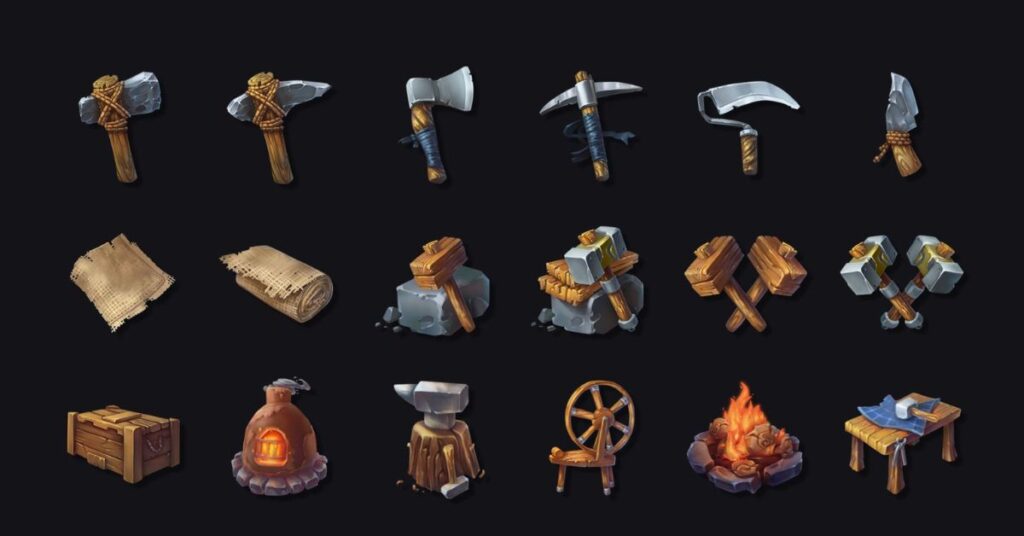
The creation of Counter-Strike 1.6’s icons was a delicate blend of artistic creativity and scientific precision. These small yet significant elements of the game’s interface had to convey a wealth of information at a glance while also contributing to the overall aesthetic of the game.
1. Balance of Form and Function
The icons in Counter-Strike 1.6 were masterclasses in balancing form and function. Each icon had to be instantly recognizable, conveying information about weapons, equipment, or game status in a split second. At the same time, they needed to be visually appealing and contribute to the game’s overall aesthetic.
- Weapon icons were designed to reflect the actual appearance of the weapons
- Equipment icons used simple, clear shapes to indicate their function
- Status icons utilized universally understood symbols for quick comprehension
2. Color Theory in Icon Design
Color played a crucial role in the design of Counter-Strike 1.6’s icons. The designers employed a carefully chosen color palette that not only looked good but also served practical purposes within the game.
- High contrast colors were used to ensure visibility in various in-game environments
- Different colors were used to categorize different types of items or information
- The color scheme contributed to the game’s overall military and counter-terrorism theme
3. Scalability and Clarity
Given the various resolutions and screen sizes that players might be using, the icons had to be designed with scalability in mind. They needed to be clear and recognizable whether displayed large or small.
- Simple, bold shapes were used to ensure clarity at small sizes
- Details were added in a way that didn’t compromise visibility when scaled down
- Icons were tested at various sizes to ensure consistent legibility
What Made the Icons Special?
The icons of Counter-Strike 1.6 stood out for several reasons. Their design was a perfect blend of simplicity and detail, allowing players to quickly identify items while also appreciating the craftsmanship that went into each icon. The consistency in style across all icons created a cohesive visual language that became instantly recognizable to players.
Moreover, the icons were designed with gameplay in mind. They weren’t just pretty pictures; they were functional elements that aided in quick decision-making during intense gameplay moments. This fusion of aesthetics and functionality set a new standard for game interface design.
Popular Types of Banners in Counter-Strike 1.6
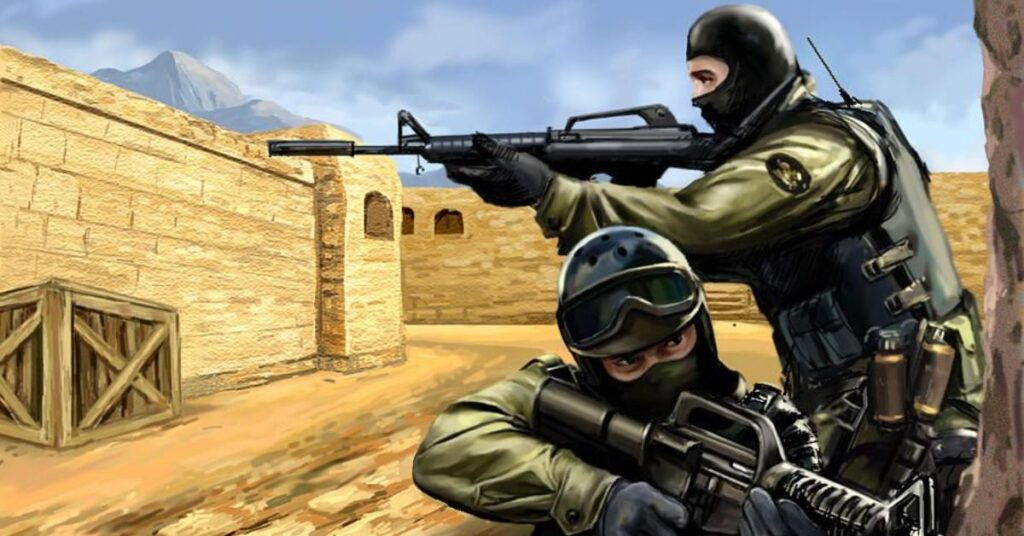
Banners in Counter-Strike 1.6 came in various forms, each serving a unique purpose within the game’s ecosystem. Some of the most popular types included:
- Server Banners: These displayed information about the server a player was connecting to.
- Clan Banners: Used by groups of players to showcase their team identity.
- Achievement Banners: Displayed special accomplishments or ranks of players.
- Map Banners: Provided visual cues about the current map being played.
- Event Banners: Used to promote special events or tournaments within the game.
Banners: More Than Just Decorations
While banners in Counter-Strike 1.6 certainly added visual flair to the game, their role extended far beyond mere decoration. They served as important communication tools within the game’s community.
Community Identity
Banners allowed players and groups to express their identity within the game. Clan banners, in particular, became a source of pride and recognition among players.
Information Conveyance
Server banners provided crucial information about game modes, rules, and server performance at a glance, helping players choose the right server for their preferences.
Achievement Showcase
Achievement banners gave players a way to display their accomplishments, adding an extra layer of motivation and competition to the game.
Legacy of Counter-Strike 1.6 Visual Design
The impact of Counter-Strike 1.6’s visual design, particularly its icons and banners, extended far beyond the game itself. It left a lasting legacy that continues to influence game design to this day.
1. Influence on Modern Games
Many modern games, especially in the first-person shooter genre, draw inspiration from Counter-Strike 1.6’s clean, functional design philosophy. The way information is conveyed through icons and the use of banners for community expression can be seen in numerous contemporary titles.
Read This Blog: Why Choose Money 6X REIT Holdings for Your Investment Portfolio?
2. Community Involvement
Counter-Strike 1.6 set a precedent for community involvement in game aesthetics. The ability for players to create and use custom icons and banners fostered a sense of ownership and creativity that many games now strive to emulate.
3. Esports Connection
The clear, instantly recognizable icons of Counter-Strike 1.6 played a crucial role in making the game spectator-friendly, contributing to its success as an early esports title. This approach to visual design for spectator clarity has become a standard in competitive gaming.
4. Nostalgia Factor
For many gamers, the icons and banners of Counter-Strike 1.6 evoke strong feelings of nostalgia. This emotional connection has led to their continued use and reference in gaming culture, keeping the visual legacy of the game alive.
5. Educational Impact
The success of Counter-Strike 1.6’s visual design has made it a case study in game design courses, influencing a new generation of game designers and artists.
How Players Used Icons and Banners?
Players interacted with icons and banners in Counter-Strike 1.6 in various ways:
- Quick decision making: Icons allowed players to quickly identify and select weapons and equipment during fast-paced gameplay.
- Team coordination: Banners helped teams identify each other and coordinate strategies.
- Personal expression: Custom banners allowed players to express their personalities or affiliations.
- Server selection: Players used server banners to choose game modes and servers that matched their preferences.
- Achievement tracking: Achievement banners motivated players to strive for in-game accomplishments.
Key Features of Counter-Strike 1.6 Icons
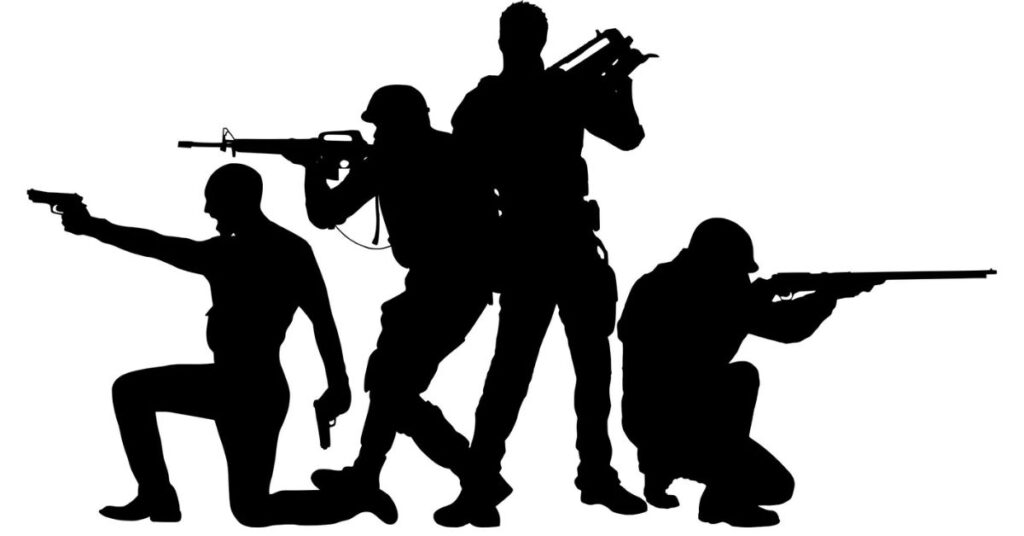
The icons in Counter-Strike 1.6 were characterized by several key features:
- Simplicity: Clean, uncluttered designs that were easy to recognize at a glance.
- Consistency: A uniform style across all icons created a cohesive visual language.
- Informativeness: Each icon conveyed crucial information about the item it represented.
- Scalability: Icons remained clear and recognizable at various sizes.
- Thematic relevance: The design of icons aligned with the game’s military and counter-terrorism theme.
Art of Making Icons and Banners
The creation of icons and banners for Counter-Strike 1.6 was a meticulous process that combined artistic skill with technical knowledge. Artists had to consider factors such as pixel limitations, color restrictions, and the need for clarity at small sizes. The process often involved multiple iterations and testing to ensure that each icon and banner served its purpose effectively while maintaining visual appeal.
Community involvement also played a significant role in the evolution of Counter-Strike 1.6’s visual elements. Talented players often created custom icons and banners, some of which gained widespread popularity and even influenced official designs.
Why Icons and Banners Mattered?
Icons and banners were crucial to the Counter-Strike 1.6 experience for several reasons:
- They enhanced gameplay by providing quick, clear information to players.
- They contributed to the game’s unique visual identity, setting it apart from other FPS games of the time.
- They fostered community engagement by allowing for customization and personal expression.
- They helped in creating a spectator-friendly environment, crucial for the game’s success in competitive play.
- They added depth to the game’s ecosystem, with certain icons and banners becoming status symbols within the community.
Comparison: Counter-Strike 1.6 vs Modern FPS Games
When comparing Counter-Strike 1.6’s visual design to modern FPS games, several differences and similarities emerge:
- Simplicity vs. Complexity: CS 1.6 icons were simpler, while modern games often feature more detailed, 3D-rendered icons.
- Customization: Many modern games have expanded on CS 1.6’s customization options, offering even more ways for players to personalize their experience.
- Information Density: Modern games often display more information on-screen, compared to CS 1.6’s minimalist approach.
- Art Style: While CS 1.6 had a more realistic style, many modern games experiment with various art styles for their icons and banners.
- Community Involvement: The tradition of community-created content, started by games like CS 1.6, continues in many modern titles.
Read This Blog: RealizePad.Store: Revolutionizing Your Digital Note-Taking Experience
How Icons and Banners Changed Over Time?
The evolution of Counter-Strike’s icons and banners from version 1.6 to later iterations reflects broader trends in game design and technology:
- Increased Detail: As technology advanced, icons became more detailed and realistic.
- Dynamic Elements: Later versions introduced animated icons and banners.
- Integration with Achievements: Icons and banners became more closely tied to in-game achievements and progression systems.
- Monetization: Custom icons and banners became part of microtransaction systems in later versions.
- Standardization: To maintain competitive balance, especially in esports contexts, there was a move towards more standardized visual elements.
Impact of Counter-Strike 1.6
The impact of Counter-Strike 1.6, including its iconic visual elements, has been far-reaching:
- It set standards for user interface design in FPS games.
- It popularized the concept of community-created content in games.
- Its clear, functional design contributed to its success as an early esports title.
- It influenced a generation of game designers and artists.
- It created a visual language that remains recognizable in gaming culture today.
How to Play Counter-Strike 1.6?
While Counter-Strike 1.6 is an older game, it still has a dedicated player base. Here’s how you can experience this classic:
- Purchase the game on Steam, where it’s still available.
- Install the game and any necessary updates.
- Choose between playing offline with bots or online on community servers.
- Familiarize yourself with the game’s unique mechanics and strategies.
- Join the community to fully experience the social aspects of the game.
Final Words
Counter-Strike 1.6’s icons and banners were more than just visual elements; they were integral parts of a gaming revolution. Their design philosophy – balancing form and function, emphasizing clarity and recognition – set new standards in game interface design. These elements didn’t just serve a practical purpose within the game; they became cultural touchstones, instantly recognizable symbols of one of gaming’s most enduring titles.
The legacy of Counter-Strike 1.6’s visual design continues to influence game development today. Its approach to conveying information quickly and clearly, its encouragement of community creativity, and its contribution to the spectator-friendly nature of competitive gaming have all left lasting imprints on the industry.
Frequently Asked Questions
What were the most famous icons in Counter-Strike 1.6?
The AK-47, M4A1, and AWP weapon icons were among the most recognizable and iconic in the game.
Could players make their own icons and banners?
Yes, Counter-Strike 1.6 supported custom icons and banners, fostering a vibrant community of creators.
Did the icons change in newer versions of Counter-Strike?
Yes, later versions featured updated, more detailed icons while maintaining the recognizable style of the originals.
Were banners only decorative or did they have a use in the game?
Banners served both decorative and functional purposes, providing information about servers, clans, and achievements.
How did icons help in gameplay?
Icons allowed for quick identification of weapons and equipment, crucial for fast-paced decision-making during matches.

Sallas: Tech-savvy professional with 5 years in the industry. Skilled in software development, cloud computing, and AI. Known for innovative solutions and teamwork.


